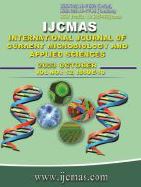


 National Academy of Agricultural Sciences (NAAS)
National Academy of Agricultural Sciences (NAAS)

|
PRINT ISSN : 2319-7692
Online ISSN : 2319-7706 Issues : 12 per year Publisher : Excellent Publishers Email : editorijcmas@gmail.com / submit@ijcmas.com Editor-in-chief: Dr.M.Prakash Index Copernicus ICV 2018: 95.39 NAAS RATING 2020: 5.38 |
Nutritional needs in hatcheries are very important to support the growth and health of larvae. This study aims to determine the growth response and performance of tiger shrimp post larvae given artemia instars that have a yolk sacand artemia that do not have a yolk sac. The test animals used were stadia Pl-1 of tiger shrimp post larvae, rearing containers of fiber tanks, volume of 1,000 liters, 12 units, stocking density of 30 individuals/liter. Using a completely randomized design with 3 treatments and 4 replications, namely (A) the use of instar artemia which still hada yolk sac, (B) artemia which did not have a yolk sac and (C) 50% of treatment A and 50% of treatment B respectively. The results of this study were weight growth in treatment A 0.00258 g and treatment B 0.00232 g and treatment C 0.002280. The relative growth rate in treatment A was 45.4%, B 40.0% and C 39.2%. Survival rates ranged from 67.4%-62.2% and there was no significant difference. Morphological score values ranged from 91.8-89.0. Vitality performance of post larvae through immersion test in 200 ppm formalin for 30 minutes which treatment A 78.67%, B 73.33% and C 75.33% while through freshwater immersion test for 15 minutes that treatment A 23%, B 13.33% and C 20.0%. In conclusion, the relative growth rate of post larvae of tiger shrimp given artemia which has a yolk sac(A) is better (13.5%) than artemia which does not have a yolk sac(B) or from a combination of both (C) which is 16.0%. The survival rate of treatment A was better (7.6%) than treatment B and (3.7%) of treatment C. Morphological performance was not significantly different between treatments A, B and C. Vitality performance with the formalin test was relatively similar and not significantly different, but through freshwater immersion treatment A was much better (120%) and significantly different than treatment B, and better (47.7%) than treatment C.
 |
 |
 |
 |
 |